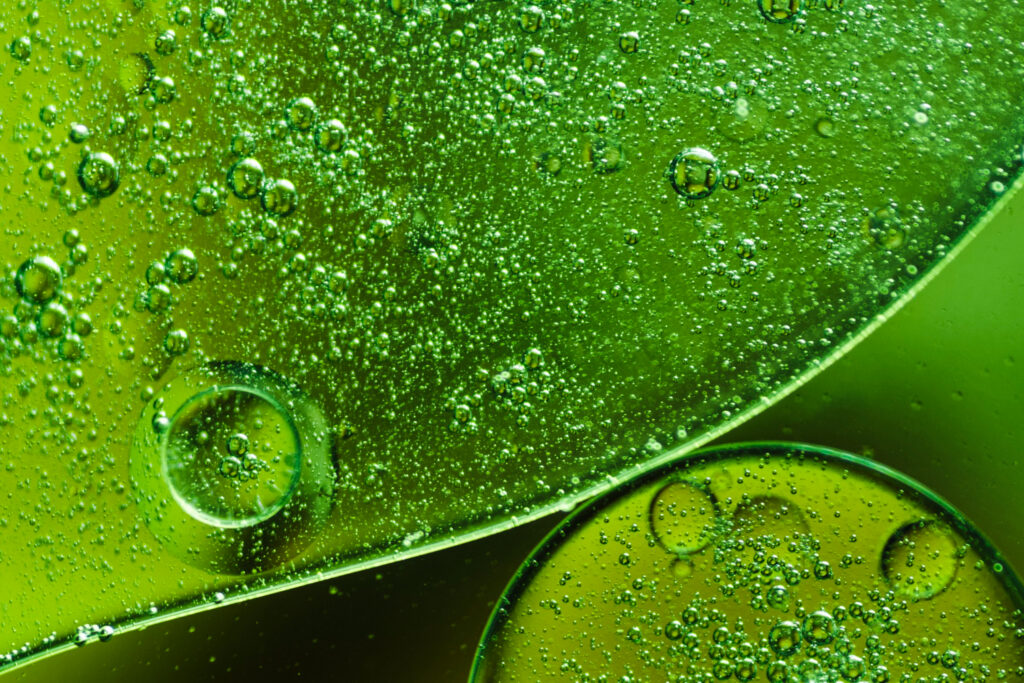Minimizing the carbon footprint through microalgae as biological CO2 capturers

Las microalgas transforman dióxido de carbono en biomasa útil para biocombustibles y productos industriales.
The fight against climate change requires innovative solutions that are both sustainable and effective. Within this context, microalgae have emerged as a promising alternative for the capture and conversion of carbon dioxide (CO2), a key greenhouse gas in global warming. This technology not only helps mitigate CO2 emissions but also opens the door to bioenergy production and high-value byproducts, representing a significant step toward a carbon circular economy.
CO2 is one of the primary contributors to climate change due to its ability to trap heat in the atmosphere. Its accumulation stems mainly from the combustion of fossil fuels in industrial activities, transportation, and energy production. According to various studies, CO2 released by power plants, factories, and vehicles accounts for over 70% of global greenhouse gas emissions, further intensifying the climate crisis.
To counteract this impact, several carbon capture and storage (CCS) technologies have been proposed. However, many face economic and operational limitations. Physical and chemical methods, such as solvent absorption or solid material adsorption, are costly and require large amounts of energy. In contrast, the use of microalgae as a biological carbon capture system presents a much more accessible, economical, and sustainable alternative.
Microalgae as a biological solution for CO2 capture
Microalgae are photosynthetic microorganisms capable of capturing CO2 from the atmosphere and transforming it into biomass. This process, known as CO2 bioconversion, takes place through photosynthesis, where microalgae fix carbon dioxide and convert it into organic compounds such as carbohydrates, lipids, and proteins. Thanks to their high photosynthetic efficiency, microalgae can fix CO2 up to 50 times more efficiently than terrestrial plants, making them an ideal tool to address the climate change challenge.
Moreover, microalgae can grow rapidly in diverse environments, such as coastlines, saline lands, or even deserts, without competing with food production. This is a crucial aspect, as it allows for microalgae cultivation without using agricultural land, thereby avoiding disruption to the food supply chain. Additionally, their ability to absorb flue gases from factories or power plants makes them even more valuable, as they can be used to directly reduce industrial CO2 emissions.
Applications and advantages of microalgae
The main appeal of microalgae lies not only in their ability to capture CO2 but also in their potential to generate high-value-added products. Microalgal biomass can be converted into biofuels, such as biodiesel or biohydrogen, which replace fossil fuels without the harmful consequences of conventional energy production. Furthermore, the organic compounds extracted from microalgae have applications in sectors such as pharmaceuticals, cosmetics, food, and fertilizer production.
One of the most promising aspects of this technology is the possibility of creating a closed carbon cycle, where the captured CO2 is not only safely stored in the biomass of microalgae but also recycled to produce useful products, promoting a greener and more circular economy. In addition, microalgae can grow using wastewater, reducing cultivation costs and utilizing resources that would otherwise be discarded.
Research in this field is advancing rapidly, with studies exploring the use of molecular tools and genetic modifications to improve microalgae efficiency in CO2 capture. It is expected that future biotechnological platforms will further optimize this process, increasing its economic viability and scalability, which could make microalgae one of the most effective and profitable solutions in the fight against climate change.
Challenges and future outlook
Despite their numerous advantages, the use of microalgae for CO2 capture still faces several challenges. Optimizing the cultivation process, scaling to industrial levels, and efficiently harvesting biomass are key areas that must be refined for this technology to become viable on a large scale. Nevertheless, the promise of biorefining and the generation of high-value products provide strong incentives to overcome these obstacles.
In conclusion, microalgae not only offer an innovative and cost-effective solution for CO2 capture but also contribute to the development of clean and sustainable technologies. With continued research progress and support for the implementation of more efficient cultivation processes, microalgae could play a crucial role in creating a circular economy and reducing the global carbon footprint.








